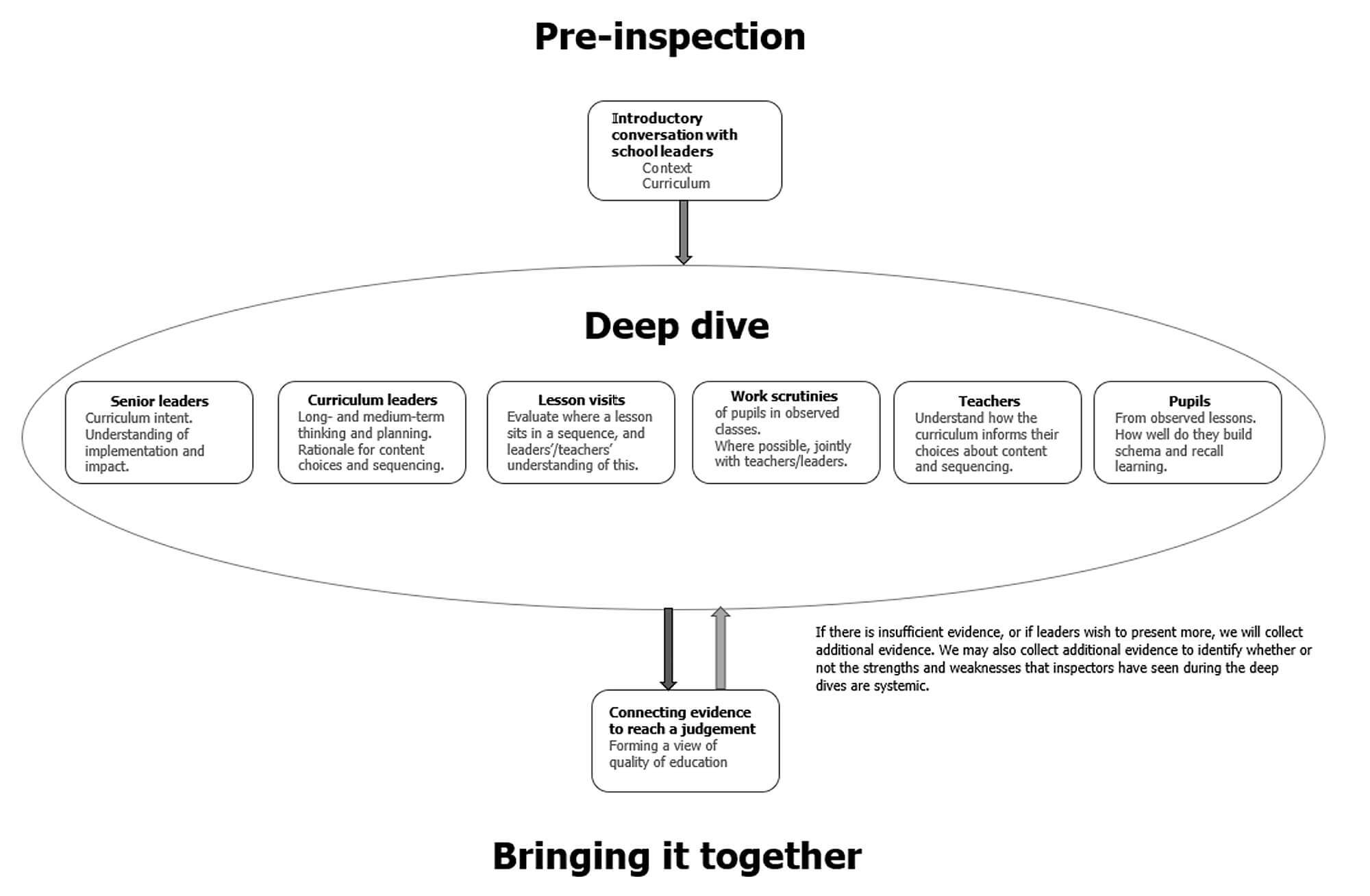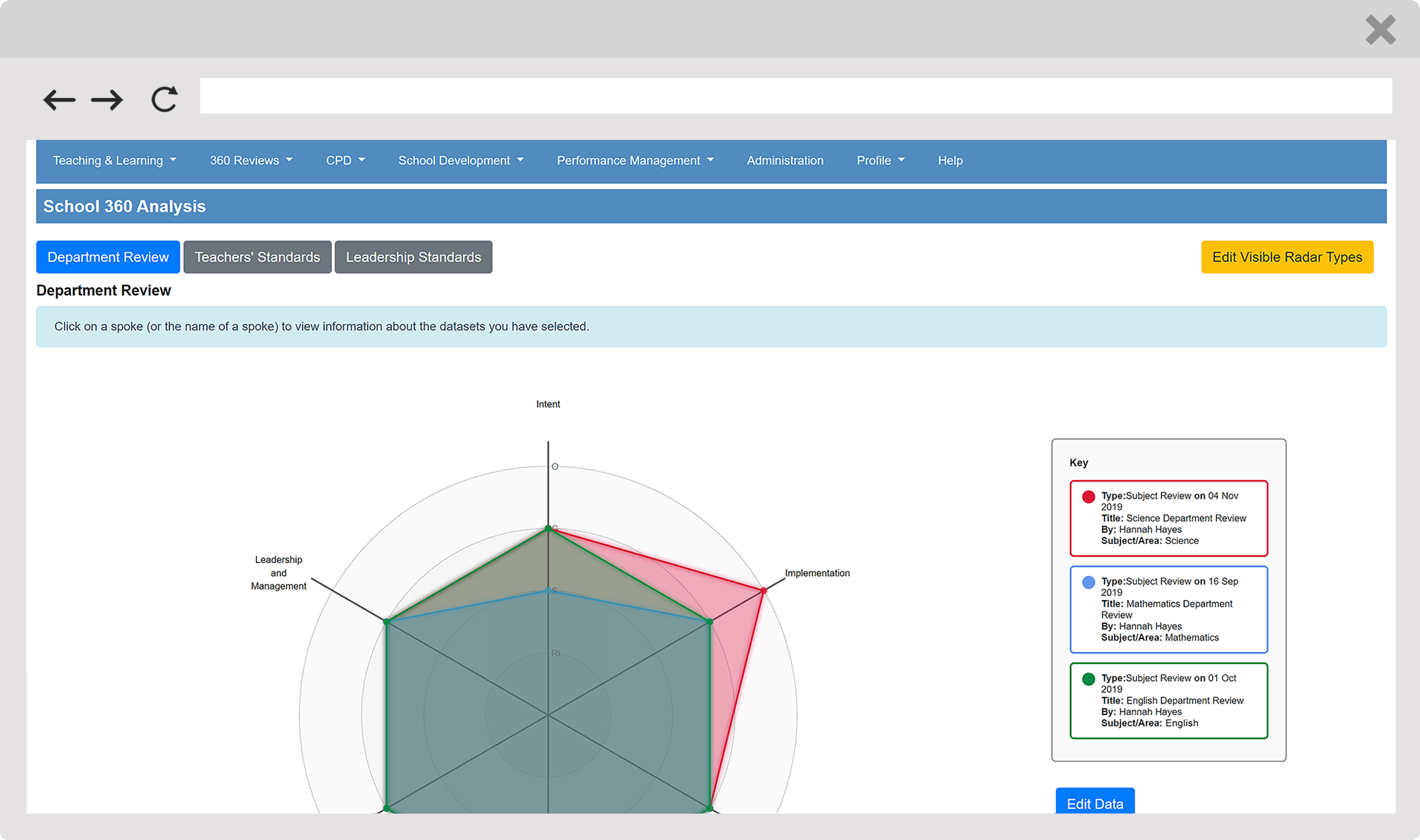Coaching for staff development has become a key concept in many schools. When managed correctly…
Deep Dives – Robust Delegated Leadership and Intensive Focus on Key Curriculum Areas
The most recent Ofsted Inspection Framework is one of the most strategic for many years, although due to the pandemic it remains largely untested! Its goal is to ensure schools are focused on delivering a high-quality education and that provision is seen holistically from intent through implementation to impact. This means there needs to be continuity from governance and senior leadership through to middle leaders and into day to day practice in the classroom, with the thread throughout being the curriculum – a word that almost disappeared from previous inspections but that is back at the heart of this framework.
Ofsted’s inspection approach has been revised to enable it to form a judgement on the connectivity of curriculum, teaching, assessment and standards (the Quality of Education). There are 3 steps in the new methodology:
1. Top-level view of school’s curriculum
What is on offer, to whom and when, school leaders’ understanding of curriculum intent and sequencing, and why these choices were made.
2. ‘Deep dive’ of subjects, topics or aspects
Gathering evidence on the curriculum intent, implementation through observation and discussions with curriculum leaders, teachers and pupils.
3. Bringing it together
Consolidation of evidence and a test to see whether any issues identified during the deep dives are systemic. This will usually lead to school leaders bringing forward further evidence and inspectors gathering additional evidence.
Although this approach focuses on the Quality of Education, in the process inspectors will gather evidence for Behaviour and Attitudes, Personal Development, and Leadership and Management judgements.
Top-level view begins to form during the pre-inspection conversation but will be developed through senior leader meetings through-out the inspection. Inspectors will seek to understand:
- the school’s context, and the progress the school has made since the previous inspection;
- the headteacher’s assessment of the school’s current strengths and weaknesses, particularly in relation to the curriculum, the way teaching supports pupils to learn the curriculum, the standards that pupils achieve, pupils’ behaviour and attitudes, and personal development;
- the extent to which all pupils have access to the school’s full curriculum;
- a discussion of specific areas of the school (subjects, year groups, aspects of provision) that will be a focus of attention during inspection.
“Let’s see that in action together” is the mantra for deep dives. In order for any judgement to be valid and reliable evidence cannot be narrow and unsubstantiated, therefore samples need to be broad and triangulated. One deep dive is insufficient to form a view. In primary schools there will be deep dives in reading and in one or more foundation subject, often accompanied by a deep dive in maths. In secondary schools 4 to 6 subjects will receive a deep dive, looking at a variety of pupils from different year groups.
The deep dive approach places considerably more focus on the role of the curriculum leads as an important link in the chain of curriculum – they link the intention of the curriculum to its implementation. Their knowledge and understanding of the planned curriculum and what is taking place day to day will be a key aspect of the inspection – it’s at the heart of what, when and how!
A deep dive includes:
- Evaluation of senior leaders’ intent for the curriculum in this subject or area, and their understanding of its implementation and impact.
- Evaluation of curriculum leaders’ long- and medium-term thinking and planning, including the rationale for content choices and curriculum sequencing – this will inform the shape of deep dive. Inspectors need to know the purpose of the lesson they visit, how it is sequenced and what pupils know and understand (this will require conversations with teachers also).
- Visits to a deliberately and explicitly connected sample of lessons – inspectors are assessing a sequence of lessons not an individual lesson; they will not grade individual lessons. Inspectors approach to lesson observation is set out in ‘How valid and reliable is the use of lesson observation in supporting judgements on the quality of education? – Ofsted June 2019’ (which we blogged about here).
- Work scrutiny of books or other kinds of work produced by pupils who are part of classes that have also been observed by inspectors. Inspectors should review a minimum of 6 workbooks in lessons they visit and scrutinise work from at least 2 year groups in depth. They will be guided by ‘Workbook scrutiny – Ensuring validity and reliability in inspections – Ofsted June 2019’ (which we blogged about here).
- Discussion with teachers to understand how the curriculum informs their choices about content and sequencing to support effective learning.
- Discussions with a group of pupils from the lessons observed.
*Much of the above is taken directly from Inspecting the curriculum – May 2019 – Ofsted publication.
Practical Consequences for Schools
Schools’ processes and documentation needs to reflect the different approach to inspections. Indeed, the new approach should encourage better development of delegated leadership through subject leaders. The emphasis of schools’ own quality assurance activities needs to test the intent, sequencing and implementation of the curriculum and the ability of pupils to know more, remember more and be able to do more.
Schools need to not only consider how they gather their self-evaluation evidence but in what form and how it is stored and analysed. Equally there is an opportunity for performance management objectives and CPD to be refocused.
Conducting Your Own ‘Deep Dives’
Ensure you’re ready for Ofsted by conducting your own ‘deep dives’ using our online school improvement and staff development system, Lessons Learned. Our 360 Review module, seen below, can be set up to capture all the elements of a deep dive, including intent, implementation and impact, and then used to conduct a review of a department as a whole. Each strand can be given a judgement (based on a scale of your choosing) as well as notes and further evidence in the form of Word docs, PDFs, photos and video.
To book your free, no-obligations online demo call us on 0800 788 0555 or use the booking form on our website here.


